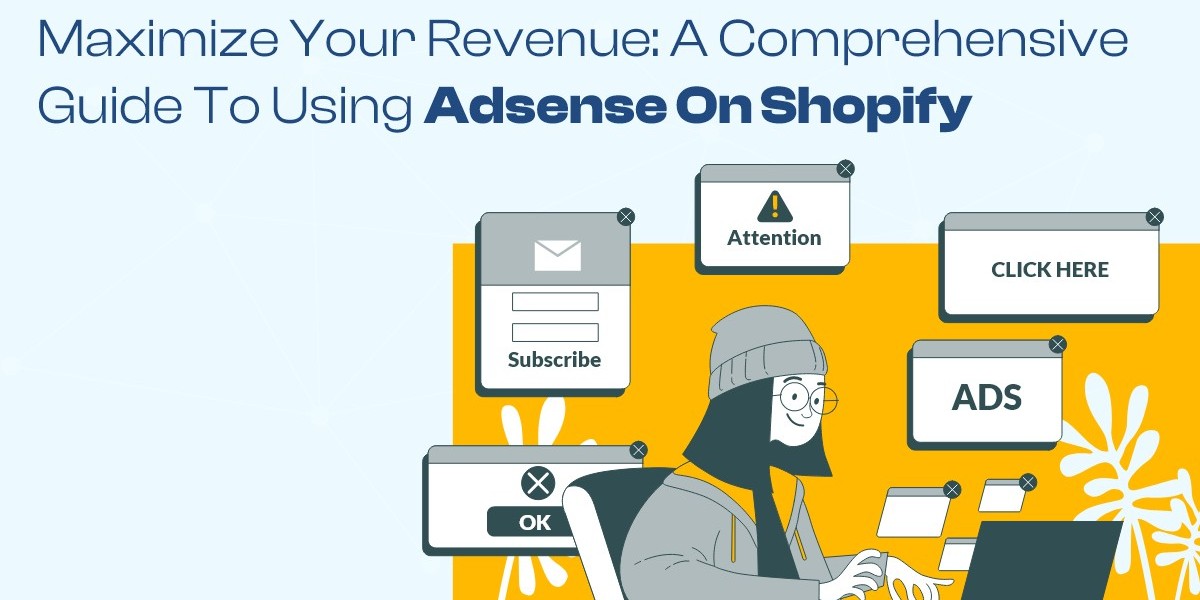Running an online store with Shopify opens many revenue opportunities, but selling products isn’t the only way to generate income. Google AdSense is an excellent tool that allows Shopify store owners to earn passive revenue by displaying ads on their site. By integrating AdSense effectively, you can increase your revenue while maintaining a seamless user experience. Unlock the full potential of your Shopify store with expert tips on leveraging Google AdSense shopify for maximum revenue generation. Learn how to optimize your ads today! In this comprehensive guide, we’ll walk you through everything you need to know about using AdSense on your Shopify store, including setup, placement strategies, and optimization tips.
What is Google AdSense?
Overview of AdSense
Google AdSense is an ad placement service that lets website owners display ads and earn money when visitors click on or view these ads. The program is free to join, and it offers a way to monetize websites by displaying ads that are relevant to your audience. These ads are automatically generated and managed by Google, meaning you don't need to deal with advertisers directly.
How Does AdSense Work?
AdSense works by placing ads on your site based on the content of your pages and the browsing habits of your visitors. Google analyzes your site and matches it with relevant ads, ensuring that the content is appropriate for your audience. You get paid based on two primary factors:
- Cost-Per-Click (CPC): When visitors click on the ads.
- Cost-Per-Thousand Impressions (CPM): For every thousand times an ad is displayed on your site.
Why Use AdSense on Shopify?
For Shopify store owners, AdSense offers an additional stream of revenue beyond product sales. It can help you capitalize on your site's traffic, especially if you have a blog or informational content in addition to product listings. Moreover, AdSense is easy to integrate and manage, making it a practical solution for store owners looking to diversify their income.
Setting Up Google AdSense for Your Shopify Store
Step 1: Create a Google AdSense Account
Before you can start earning with AdSense, you’ll need to create an account. Follow these steps:
- Visit the Google AdSense website and click on “Get started.”
- Sign in with your existing Google account or create a new one.
- Enter your website details (your Shopify store URL) and select your language.
- Submit your site for review.
Once Google approves your site, you’ll be able to create ad units and start displaying ads.
Step 2: Generate Ad Units
After your AdSense account is approved, the next step is to create ad units to display in your store:
- Log in to your AdSense account and navigate to the “Ads” section.
- Click on the By ad unit and select the type of ad you want to create: display ads, in-feed ads, or in-article ads.
- Customize the ad’s style, size, and layout to fit your Shopify store’s design. Google offers a range of ad formats to ensure they blend seamlessly with your store’s layout.
- Once you’ve created the ad unit, click on Save and get the code. This generates a snippet of HTML code that you’ll need to insert into your Shopify theme files.
Step 3: Adding AdSense Code to Shopify
To display AdSense ads on your Shopify store, you’ll need to add the ad code to your store’s theme. Here’s how:
- In your Shopify admin dashboard, go to Online Store > Themes.
- Click on Actions next to your current theme, and select Edit code.
- Determine where you want to display the ads (e.g., the header, footer, or product pages). For global ads, place the code in your theme. liquid file. For specific ads, place them in templates like product. liquid or blog. liquid.
- Paste the AdSense code in the desired location and save your changes.
Ad Placement Strategies for Shopify
Strategic Ad Placement
Where you place your ads on your Shopify store will directly impact both your revenue and user experience. Ads that are too prominent can detract from your store’s design or overwhelm customers, while ads that are too hidden may not generate much income. Here are some recommended placements:
- Above-the-Fold Ads: Place ads in areas that users see immediately without scrolling. This could be in the header or near the top of a blog post.
- In-Content Ads: Placing ads within product descriptions or blog posts often yields high engagement, as visitors are more likely to interact with ads that are integrated into the content.
- Sidebar Ads: Ads in the sidebar are less intrusive but still visible enough to capture attention.
- Footer Ads: While these ads don’t get as much attention, they can still generate some revenue without interrupting the shopping experience.
Mobile Optimization
Given that a significant portion of online traffic comes from mobile users, it’s essential to ensure that your ads are optimized for mobile devices. Google automatically provides mobile-friendly ads, but you should also ensure that your Shopify theme is responsive and that ads fit well on smaller screens.
Testing Different Placements
A/B testing different ad placements can help you find the most effective locations. For example, you can test ads in the sidebar versus ads in the header to see which placement generates more clicks. Over time, this testing will help you optimize your ad setup for maximum revenue.
Optimizing Your AdSense Performance
Monitor and Analyze Ad Performance
Google AdSense offers built-in reporting tools that provide insights into how your ads are performing. Key metrics to track include:
- Click-Through Rate (CTR): The percentage of visitors who click on an ad.
- Cost-Per-Click (CPC): How much you earn per click.
- Earnings Per Thousand Impressions (RPM): How much revenue do you generate for every 1,000 ad views.
Regularly reviewing these metrics will help you understand what’s working and what needs improvement.
Use Auto Ads for Better Results
Google offers a feature called Auto Ads, which automatically places and optimizes ads across your site. Auto Ads uses machine learning to determine the best placements for maximizing your revenue. This feature is particularly useful if you don’t want to spend time manually placing and testing ads.
Avoiding Ad Overload
While displaying ads can generate extra revenue, it’s essential not to overload your Shopify store with too many ads. Too many ads can slow down your site, frustrate visitors, and ultimately hurt your store’s performance. Focus on high-quality placements and keep the number of ads per page to a minimum.
Focus on High-Value Content Pages
Some pages on your Shopify store may generate more ad revenue than others. For instance, blog pages or informational content tends to attract more clicks than product pages, where visitors are more focused on shopping. Identify these high-value pages and prioritize ad placement there to maximize your earnings.
Complying with AdSense Policies
Google’s AdSense Policies
Google has strict policies to ensure the integrity and quality of its ad network. These policies include rules on ad placement, content, and user experience. Failure to comply can result in penalties, including suspension from the AdSense program. Some key policies include:
- Ad Placement: Ads should not interfere with navigation or be placed in deceptive ways (e.g., ads shouldn’t mimic buttons).
- Content Guidelines: Your Shopify store must adhere to Google’s content policies, meaning it cannot contain prohibited content like adult material or copyrighted content.
- Click Fraud: Never encourage visitors to click on ads or click on your own ads. Google strictly prohibits this behavior.
Ensuring Compliance on Your Shopify Store
To stay compliant with Google’s policies, regularly review their guidelines and ensure that your ad placements do not interfere with the user experience. Additionally, focus on maintaining high-quality content across your Shopify store, as Google rewards sites that offer valuable, original content to users.
Conclusion
Google AdSense provides Shopify store owners with a great way to diversify revenue streams by displaying ads. With the right setup and optimization, you can generate a steady stream of income while maintaining a positive shopping experience for your customers. By carefully placing ads, monitoring performance, and complying with AdSense policies, you can maximize your revenue without overwhelming your site visitors. Learn how to maximize revenue with AdSense on Shopify using our comprehensive guide. Discover the best strategies for success with the Shopify mobile app builder.
Whether you’re new to AdSense or looking to improve your existing setup, this comprehensive guide gives you all the tools you need to effectively integrate and optimize Google AdSense on your Shopify store. Start experimenting with different placements, and continually refine your strategy to see the best results!








